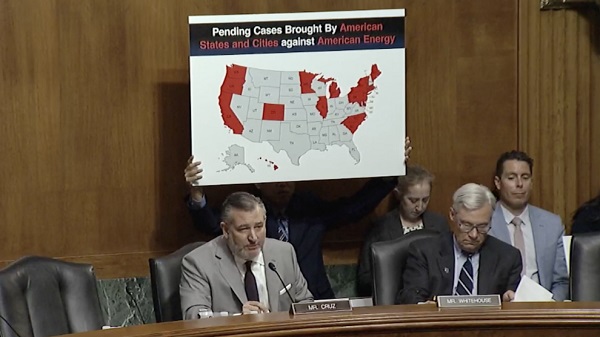Agriculture
Canadian Federal Government Taking Measures to Reduce Impact of COVID-19 on Agriculture

Canadian Federal Government Taking Measures to Reduce Impact of COVID-19 on Agriculture
On April 13, the Canadian Federal Government announced the distribution of federal funds to assist farms in paying temporary workers. This monetary assistance helps compensate workers during the quarantine.
Canada, especially Western Canada, is grappling with the new reality of the COVID-19 pandemic and its impact on the 2020 growing season. Western Canada accounts for over 80% of farmable land, and the industry is heavily reliant on beef and pork exports, especially to the United States. With production and processing facilities shut down, companies are experiencing complications in distribution, which may have a significant impact on the supply chain in the upcoming months.
Labour shortages are the main issue for most farms, both in the field and in processing facilities. Many enterprises are reliant on migrant farmworkers, who travel seasonally to Canada, primarily from Mexico and Jamaica. With many farms experiencing a delay in worker arrivals and a decrease in the number of workers available, perishable crops are especially susceptible to production issues down the road.
Labour Shortages
Over 60,000 temporary, seasonal workers migrate to Canada annually for employment. Many workers are employed by the same farm year after year, receiving industry-specific training from vegetable production to winemaking. For farmers who rely on this labor, the past few weeks have been incredibly difficult. Especially when dealing with perishable crops, labor shortages can be the deciding factor in a crop’s. For one farmer, a field of asparagus is worth $40,000. But without the necessary labor to harvest, the crop will go to waste.
Labour shortages in Canadian agriculture are especially tricky because there is no natural alternative. Many farmers already express frustration with the system, since the main reason they employ temporary migrant workers is because it is nearly impossible to find Canadians who want the job. Agricultural labor can be incredibly hard work and involves significant training.
Trained employees are familiar with all aspects of the business, including the proper use of equipment, which can be a tricky skill to master. As unemployment rises in response to COVID-19 business shutdowns, it may seem like an obvious solution to employ people on farms. But most people lack the skills necessary, and farmers do not have the time or resources to train them quickly.
New Funding
As a possible solution, the Canadian Federal Government proposed new funding to assist farms struggling with income disruption as a result of the pandemic. However, the effectiveness of the bailout is debatable. Many farmers argue that it is not enough to make a difference. The money is supposed to help pay workers during the shutdown, specifically workers who have recently arrived and are in quarantine.
Because all incoming employees are subject to a two week isolation period, farms are responsible for supplying resources until work can begin. However, migrant worker activists argue that the funds may be misused, allowing farmers to collect the money without providing adequate income for workers. The distribution method may assist farms in the short term, but it is questionable as to how much it will help in the upcoming weeks.
Production Issues
It is still too early to tell the severity of the impact of COVID-19 on Canadian food production. Certain crops, like wheat and soy, are already operated in industrial systems, requiring minimal human contact. However, fruit and vegetable farmers are warning of production issues if they continue to struggle to find workers. Similarly, in the meat industry, beef processing facilities, like Cargill, may struggle to keep up with demand amidst closures.
Before the announcement of new funds for temporary workers, the Canadian Federal Government had initially temporarily banned incoming migrant workers. This decision was quickly reversed due to outcry from Canadian farmers. While the monetary assistance is significant for farm businesses in the short term, more lasting solutions to the labour shortage problem will be required. Without enough workers, Canada is subject to an incredibly volatile market, where production and distribution issues may impact food supply both domestically and internationally.
Next Steps for Canadian Agriculture
The Canadian Federal Government is taking measures to reduce the impact of COVID-19 on agriculture, primarily through the distribution of emergency funds to support farmers during the shutdown. Additional solutions, such as alternative labour resources, are also being considered. However, there has been a mixed response to these efforts.
Some farmers feel like the aid is not enough, while others think that the solutions do not apply to them. Additionally, there has been a growing concern by some activist groups concerning the rights of migrant workers. As the situation unfolds, the role of the Canadian Federal Government will be essential to limiting supply chain disruption and production issues in the next few months.
Read more from Emily Folk

I’m Emily Folk, and I grew up in a small town in Pennsylvania. Growing up I had a love of animals, and after countless marathons of watching Animal Planet documentaries, I developed a passion for ecology and conservation. You can read more of my work by clicking this link: Conservation Folks.
Agriculture
Lacombe meat processor scores $1.2 million dollar provincial tax credit to help expansion

Alberta’s government continues to attract investment and grow the provincial economy.
The province’s inviting and tax-friendly business environment, and abundant agricultural resources, make it one of North America’s best places to do business. In addition, the Agri-Processing Investment Tax Credit helps attract investment that will further diversify Alberta’s agriculture industry.
Beretta Farms is the most recent company to qualify for the tax credit by expanding its existing facility with the potential to significantly increase production capacity. It invested more than $10.9 million in the project that is expected to increase the plant’s processing capacity from 29,583 to 44,688 head of cattle per year. Eleven new employees were hired after the expansion and the company plans to hire ten more. Through the Agri-Processing Investment Tax Credit, Alberta’s government has issued Beretta Farms a tax credit of $1,228,735.
“The Agri-Processing Investment Tax Credit is building on Alberta’s existing competitive advantages for agri-food companies and the primary producers that supply them. This facility expansion will allow Beretta Farms to increase production capacity, which means more Alberta beef across the country, and around the world.”
“This expansion by Beretta Farms is great news for Lacombe and central Alberta. It not only supports local job creation and economic growth but also strengthens Alberta’s global reputation for producing high-quality meat products. I’m proud to see our government supporting agricultural innovation and investment right here in our community.”
The tax credit provides a 12 per cent non-refundable, non-transferable tax credit when businesses invest $10 million or more in a project to build or expand a value-added agri-processing facility in Alberta. The program is open to any food manufacturers and bio processors that add value to commodities like grains or meat or turn agricultural byproducts into new consumer or industrial goods.
Beretta Farms’ facility in Lacombe is a federally registered, European Union-approved harvesting and meat processing facility specializing in the slaughter, processing, packaging and distribution of Canadian and United States cattle and bison meat products to 87 countries worldwide.
“Our recent plant expansion project at our facility in Lacombe has allowed us to increase our processing capacities and add more job opportunities in the central Alberta area. With the support and recognition from the Government of Alberta’s tax credit program, we feel we are in a better position to continue our success and have the confidence to grow our meat brands into the future.”
Alberta’s agri-processing sector is the second-largest manufacturing industry in the province and meat processing plays an important role in the sector, generating millions in annual economic impact and creating thousands of jobs. Alberta continues to be an attractive place for agricultural investment due to its agricultural resources, one of the lowest tax rates in North America, a business-friendly environment and a robust transportation network to connect with international markets.
Quick facts
- Since 2023, there are 16 applicants to the Agri-Processing Investment Tax Credit for projects worth about $1.6 billion total in new investment in Alberta’s agri-processing sector.
- To date, 13 projects have received conditional approval under the program.
- Each applicant must submit progress reports, then apply for a tax credit certificate when the project is complete.
- Beretta Farms has expanded the Lacombe facility by 10,000 square feet to include new warehousing, cooler space and an office building.
- This project has the potential to increase production capacity by 50 per cent, thereby facilitating entry into more European markets.
Related information
Agriculture
Canada’s supply management system is failing consumers

This article supplied by Troy Media.
The supply management system is cracking. With imports climbing, strict quotas in place and Bill C202 on the table, we’re struggling to feed ourselves
Canada’s supply management system, once seen as a pillar of food security and agricultural self-sufficiency, is failing at its most basic function:
ensuring a reliable domestic supply.
According to the Canadian Association of Regulated Importers, Canada imported more than 66.9 million kilograms of chicken as of June 14, a 54.6 per cent increase from the same period last year. That’s enough to feed 3.4 million Canadians for a full year based on average poultry consumption—roughly 446 million meals. Under a tightly managed quota system, those meals were supposed to be produced domestically. Instead imports now account for more than 12 per cent of this year’s domestic chicken production, revealing a growing dependence on foreign supply.
Supply management is Canada’s system for regulating dairy, poultry and egg production. It uses quotas and fixed prices to match domestic supply with demand while limiting imports, intended to protect farmers from global price swings and ensure stable supply.
To be fair, the avian influenza outbreak has disrupted poultry production and partially explains the shortfall. But even with that disruption, the numbers are staggering. Imports under trade quotas set by the World Trade Organization, the Canada-United States Mexico Agreement and the Comprehensive and Progressive Agreement for Trans-Pacific Partnership are running at or near their allowable monthly share—known as pro-rata
levels—signalling not just opportunity, but urgency. Supplementary import permits, meant to be used only in emergencies, have already surpassed 48 million kilograms, exceeding total annual import volumes in some previous years. This isn’t a seasonal hiccup. It’s a systemic failure.
The system, designed to buffer domestic markets from global volatility, is cracking under internal strain. When emergency imports become routine, we have to ask: what exactly is being managed?
Canada’s most recent regulated chicken production cycle, which ended May 31, saw one of the worst shortfalls in over 50 years. Strict quota limits stopped farmers from producing more to meet demand, leaving consumers with higher grocery bills and more imported food, shaking public confidence in the system.
Some defenders insist this is an isolated event. It’s not. For the second straight week, Canada has hit pro-rata import levels across all chicken categories. Bone-in and processed poultry, once minor players in emergency import programs, are now essential just to keep shelves stocked.
And the dysfunction doesn’t stop at chicken. Egg imports under the shortage allocation program have already topped 14 million dozen, a 104 per cent jump from last year. Not long ago, Canadians were mocking high U.S. egg prices. Now theirs have fallen. Ours haven’t.
All this in a country with $30 billion in quota value, supposedly designed to protect domestic production and reduce reliance on imports. Instead, we’re importing more and paying more.
Rather than addressing these failures, Ottawa is looking to entrench them. Bill C202, now before the Senate, seeks to shield supply management from future trade talks, making reform even harder. So we must ask: is this really what we’re protecting?
Meanwhile, our trading partners are taking full advantage. Chile, for instance, has increased chicken exports to Canada by more than 63 per cent, now accounting for nearly 96 per cent of CPTPP-origin imports. While Canada doubles down on protectionism, others are gaining long-term footholds in our market.
It’s time to face the facts. Supply management no longer guarantees supply. When a system meant to ensure resilience becomes a source of fragility, it’s no longer an asset—it’s an economic liability.
Dr. Sylvain Charlebois is a Canadian professor and researcher in food distribution and policy. He is senior director of the Agri-Food Analytics Lab at Dalhousie University and co-host of The Food Professor Podcast. He is frequently cited in the media for his insights on food prices, agricultural trends, and the global food supply chain.
Troy Media empowers Canadian community news outlets by providing independent, insightful analysis and commentary. Our mission is to support local media in helping Canadians stay informed and engaged by delivering reliable content that strengthens community connections and deepens understanding across the country.
-

 Agriculture2 days ago
Agriculture2 days agoCanada’s supply management system is failing consumers
-

 Business1 day ago
Business1 day agoCanada’s loyalty to globalism is bleeding our economy dry
-

 armed forces1 day ago
armed forces1 day agoCanada’s Military Can’t Be Fixed With Cash Alone
-

 Alberta1 day ago
Alberta1 day agoAlberta Next: Alberta Pension Plan
-

 Alberta1 day ago
Alberta1 day agoCOVID mandates protester in Canada released on bail after over 2 years in jail
-

 Crime2 days ago
Crime2 days agoProject Sleeping Giant: Inside the Chinese Mercantile Machine Linking Beijing’s Underground Banks and the Sinaloa Cartel
-

 International1 day ago
International1 day agoTrump transportation secretary tells governors to remove ‘rainbow crosswalks’
-

 Business1 day ago
Business1 day agoCarney’s spending makes Trudeau look like a cheapskate







